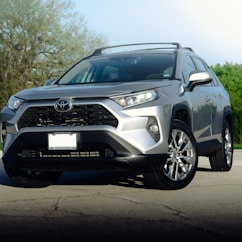Why I am bullish on Smaller Cars for Top Residual Performance & Value
As a car enthusiast and as someone who has spent their whole career in the automotive finance world studying and selling off lease and repossessed vehicles, I get asked a lot personally and professionally what I think the best picks are in terms of vehicle value and for better than average residual values in the future. Here are my thoughts on an important and under supplied source.
Jason Herman
5/19/20234 min read
As I learned early on in my career in the early 2000’s, there are many factors that go into forecasting a good residual value. I was once in a meeting with one of the residual value forecasting companies and the bank’s executive management team. It was shortly after a year where the bank had lost millions of dollars on lease end vehicles. You could have cut the air with a knife, as the tension was so high. One of the bank executives had just bluntly asked, “So tell me how we lost millions of dollars because of your forecast?” It was the question everyone was wondering, but as you likely have come to expect, especially after what the last few years has taught us, the answer was, “the market changed and we couldn’t have anticipated that.” There is always risk in calling residuals and predicting the future wholesale market. After all, as much as we pretend, none of us has a crystal ball.
However, there are many more tools, market indicator reporting, and lots more data available today to make educated decisions when it’s time to set residuals and to evaluate portfolio risks. Thank God for that. Knowing what to do with all that information and tools becomes the key though.
If you have not tried first hand lately to buy an affordable new or used vehicle, some of this may surprise you. If you have, you will get it. It is near impossible to find an affordable vehicle in the current market. As Edmunds recently published, the percent of new vehicles available under $20,000 is less than 1% and the percent of used vehicles at that same price point is currently 30% (not to mention they average about 7 years old or older when you do find them) when it used to be 60% a 5 years ago.
And do you know where the most value is when you are looking for affordable transportation? It’s with compact and midsize cars, an increasing rarity in the new and used car market today. These vehicles cost less new and of course, cost less used as a result. Even before the pandemic, the trend was that consumers wanted SUV’s and trucks and not cars, so manufactures adjusted what they offered and how much they produced of these smaller vehicles. Not to mention, they could make more money on the bigger vehicle offerings.
The domestic manufactures largely got out of the car market all together, leaving the Korean and Japanese brands to serve that more affordable vehicle market. That is even more so the case today and the pandemic was harder on Toyota and Honda, two companies who still make popular smaller cars for the market. They still are struggling in middle 2023 to catch up with demand for a host of reasons and if you want a new Corolla, Civic, Camry, etc., you probably will be put on a waiting list and will be paying full MSRP, if not more with dealer add-ons.
And the problem is going to get worse before it gets better. We all have heard that the average new car price is around $48k today, largely bolstered by a market filled with more expensive SUV’s and trucks. It should not be surprising that on KBB’s most recent study of non-luxury buyers, the third most important consideration was affordability at 66% of respondents. The affordability factor won’t be improved with less cars produced and sold over the last 3 years either. Every day that goes by where less new cars are sold, that means less used vehicles to be sold in the coming years. In addition to what we did recently, we are forming tomorrow’s used car market today, and it is especially bad for smaller cars.
I also took a look to see how many mid-size and compact cars were sold in 2019 compared to 2022, and the 2022 sales data shows about a 50% reduction in both classes of vehicles. According to my math, that is around 2 million less of these smaller vehicles coming to a market where affordability is likely to continue to be important. I say that because as much as we want it to go away, inflation and higher interest rates likely are not going to change nearly as quickly as we want and the cost of new vehicles continues to leave many people unable to afford a new car and even puts pressure on their ability to buy a reliable used vehicle. It should be noted, I realize that consumers generally like bigger vehicles, but often affordability trumps what may be ideal and when having a car becomes a necessity. Further, the average age of passenger cars on the road is almost 13.6 years old, according to Edmunds. That is nearly 2 years older than the average for SUV/Trucks. Replacement is certainly in the future for many people.
As a result, I think the demand for affordable vehicles will become an even bigger problem and while used vehicle values will likely come down some over the next few years (no surprise that during the most recent depreciation curve that these smaller vehicles have depreciated less), the lack of supply of near new vehicles will keep prices relatively high on the more desirable, but costly SUV and trucks out there, keeping them out of reach for many used car buyers. Some of these smaller cars also provide an attractive miles per gallon return to those who will really want an EV, but will be kept out of that market by a higher price of entry and not having easy access to home charging if they live in an apartment or don’t have the money for the charging infrastructure or live near it.
So that is why I am bullish on recommending mid-size and compact vehicles to consumers, banks, credit unions, and finance companies looking to fine tune their lease programs and when setting more competitive residuals. While there are certainly other classes of vehicles that deserve a similar deep dive, understanding the market as we know it today and the factors likely to influence it down the road will not guarantee used car value or residual value success, but they can certainly reduce some of your risk. And that is what the forecasting business is all about.
About the author:
Jason Herman is a 23 year veteran in the remarketing and automotive finance world and an avid car enthusiast. Having managed lease end operations, 1st and 3rd party remarketing, residual value setting & risk mitigation, and the sale of well over 1 million off lease & repossessed vehicles in his career, he enjoys providing guidance and expertise to both those new to and experienced in the automotive finance industry, as well as helping end consumers purchase or sell vehicles. Should he able to help, Jason can be reached at Jason@carguy4u.com




